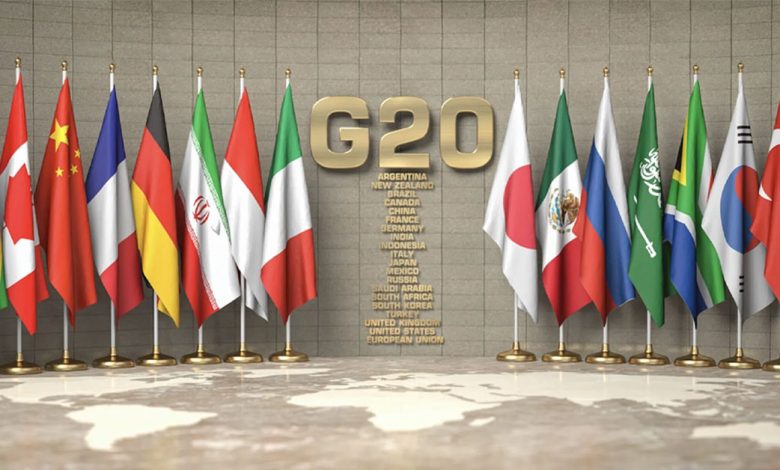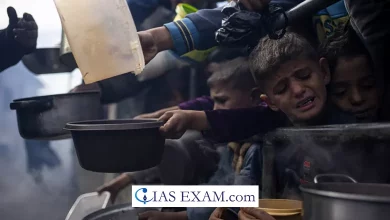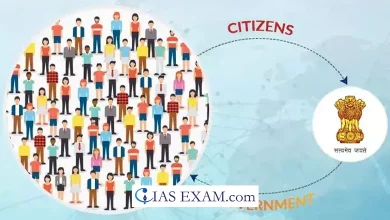Daily Current Affairs for UPSC
First G20 Disaster Risk Reduction Working Group (DRR WG) meeting
Syllabus- International Relations [GS Paper-2]

Context- India highlighted the significance of Disaster Risk Reduction (DRR) at the First G20 Disaster Risk Reduction Working Group (DRR WG) meeting recently held under India’s G20 presidency.
Key Highlights
-
- Governments have been urged by the G20 Disaster Risk Reduction Working Group to construct a social protection system with a preferred and efficient instrument for disaster risk financing.
- It emphasized the need for cutting-edge Social Protection Systems that put money into building local risk resilience in order to prevent disasters, prepare for them, and recover from them.
- The five outlined priorities:
-
- Worldwide inclusion of Early Advance notice Frameworks
- Expanded responsibility towards making foundation frameworks disaster resilient
- More grounded national financial frameworks for DRR
- Fortified national and global disaster response system
- Increased application of ecosystems-based approaches to DRR
- The G20 DRR WG expected to incorporate contemplations for the Sendai System’s mid-term survey, recharge multilateral collaboration at all levels, and illuminate future worldwide strategies and drives connected with DRR.
What is the Need for Creating a Collective G20 Framework for Disaster Risk Reduction?
- With a population of 4.7 billion, the G20 countries face significant exposure, asset concentration risk, and natural disaster vulnerability.
- Four of the top ten most vulnerable countries in the World Risk Index are G20 nations.
- In the G20 countries alone, the estimated annual average loss is USD 218 billion, or 9% of their average annual investment in infrastructure.
- In order to avoid such losses, disaster risk reduction measures may be of significant assistance.
What are the most important ways to reduce the likelihood of a disaster?
- Better Economic and Urban Development:
-
-
- Better choices and practices in economic and urban development, environmental protection, poverty and inequality reduction, and other measures can all help reduce vulnerability and risk exposure.
- In India, for instance, extreme weather conditions can be reduced and managed by effectively implementing flood risk management strategies.
- Financing:
- There is a need to reconsider supporting calamity risk decrease. As a result of the fact that a nation’s financial situation is not independent of its financing requirements, they may be limited.
- It is important to investigate novel methods of financing, such as the establishment of reserve funds, specialized credit lines, and global resource tapping.
- Infrastructure:
- Foundation, like streets, rails, air terminals, and power lines made through open incomes should be strong to catastrophes and may require more assets steadily.
- Using options that reflect the social benefits of such disaster-resistant infrastructure, it is necessary to finance this additionality.
-
- Managing Significant and Extensive Risk:
-
-
- It is necessary to devise distinct strategies for dealing with extensive risk, which entails the risk of losses from events with low frequency but high impact, and intensive risk, which entails losses from events with moderate frequency but high impact.
- An enormous piece of the misfortunes collect from broad occasions.
- In total, scattered occasions like Heat Waves, lightning, neighborhood floods, and avalanches cause huge misfortunes.
- Executing designated ways to deal with diminishing misfortunes from broad gamble occasions can have an effect in the short to medium-term skyline.
-
- Multi-sectoral, multi-tiered effort:
-
- Disaster risk reduction must be viewed as a multi-tiered, multi-sectoral endeavor.
- The level of readiness to manage unknown risks will rise if efforts are integrated horizontally across sectors and vertically from local to sub-national to national to global.
- The G20 can assist in the creation of such strategies because of the world’s interconnectedness and dependence.
Way Forward
- For disaster risk reduction, the G20 should encourage members and other stakeholders to collaborate and coordinate on early warning systems, disaster-resistant infrastructure, financial frameworks, and response systems.
- They should encourage new ideas and research into reducing disaster risk, particularly through the use of technology, data, and ecosystem-based strategies.
- To ensure that no one is left behind, disaster risk reduction efforts must be coordinated with the 2030 Agenda for Sustainable Development, the Paris Agreement on Climate Change, and the New Urban Agenda.
- The G20 has the chance to lead the implementation of the Sendai framework over the next seven years thanks to the Working Group on Disaster Risk Reduction.





.png)



